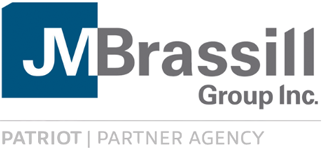 On August 22, 2017, in AARP v EEOC, a federal court found that regulations allowing employers to offer large incentives under workplace wellness programs were arbitrary. The court did not vacate (nullify) the rules due to concerns about disrupting employers’ existing programs. Instead the court has ordered the responsible agency, the Equal Employment Opportunity Commission (EEOC), to review and reconsider its regulations.
On August 22, 2017, in AARP v EEOC, a federal court found that regulations allowing employers to offer large incentives under workplace wellness programs were arbitrary. The court did not vacate (nullify) the rules due to concerns about disrupting employers’ existing programs. Instead the court has ordered the responsible agency, the Equal Employment Opportunity Commission (EEOC), to review and reconsider its regulations.
Background
The EEOC regulates and enforces provisions of the Americans with Disabilities Act (ADA) and the Genetic Information Nondiscrimination Act (GINA) that affect workplace wellness programs. Employers with 15 or more workers generally are prohibited from requiring employees to undergo medical exams or answer disability-related questions (unless needed for certain job-related health/safety exams). An exception is allowed for wellness programs that are “voluntary,” but the meaning of voluntary has long been debated.
For many years, the EEOC failed to issue regulations defining voluntary while at the same time unofficially asserting that programs were not voluntary if the employee was required to provide private health information to earn a reward or avoid a penalty. In 2015, the EEOC finally proposed rules on the matter, which were finalized in 2016 and took effect January 1, 2017. In an about-face from its prior assertions, the EEOC rules allow employers to offer wellness program incentives of up to 30% of the health plan’s cost. The AARP, on behalf of its membership, sued in federal court alleging that the 30% threshold was too high to be considered a voluntary program.
(The Health Insurance Portability and Accountability Act (HIPAA), a separate federal law primarily regulated by the Department of Labor (DOL), not the EEOC, permits group health plans, including wellness programs, to offer incentives of up to 30% of plan cost. AARP did not challenge the HIPAA rules. HIPAA’s incentive cap applies only to health-contingent programs, however, while the EEOC’s ADA and GINA rules are broader and include both participatory-only and health-contingent wellness programs.)
In AARP v EEOC, the U.S. District Court for the District of Columbia found that the EEOC failed to justify how it had determined its new definition of a voluntary program. The court ordered the EEOC to reconsider its regulations and to file a status report by September 21, 2017 that includes a proposed schedule for the review.
Employer Considerations
Last week’s court ruling did not vacate the EEOC’s wellness program rules. They remain in force and employers may use them as guidance in designing and administering their workplace programs. At the same time, however, employers will want to be mindful that the current rules are under review and may be revised in the future. Also, employers whose wellness programs offer large incentives for providing individual health information need to consider whether their program may be challenged through private litigation. Employers are encouraged to work with their benefit advisors and legal counsel to ensure their wellness programs are consistent with rules under HIPAA, and, if applicable, under the ADA and GINA.
Originally published by www.thinkhr.com



